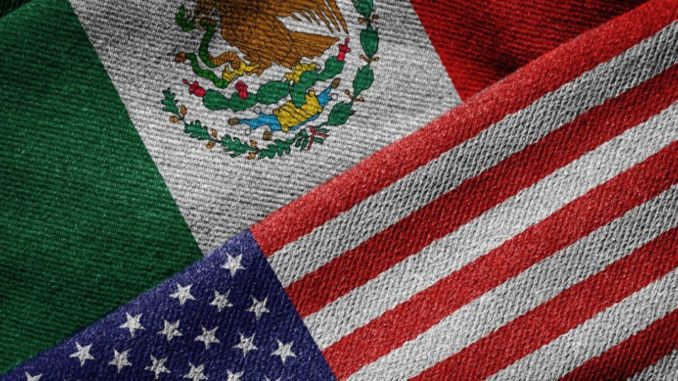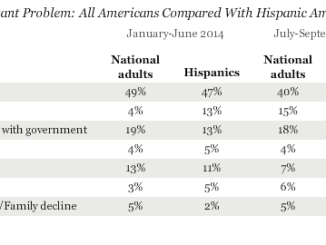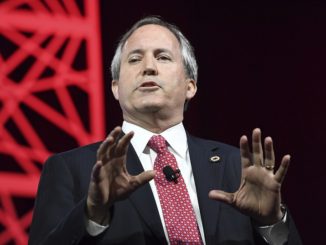
The border is safe.
Yes, you read that correctly. The border is, in fact, already safe.
For decades, the U.S. border with Mexico has been described as a violent, lawless frontier teeming with criminals. Recent national debate on immigration, NAFTA, and overall border security only amplifies that belief.
Even pop culture and Hollywood play a role in driving home that mistruth, through movies such as Sicario. The depiction of the violence in Ciudad Juárez, Mexico, coupled with sensationalist headlines of how the crew survived a fact-finding day trip to the border, perpetuates the stereotypes about the border and its residents.
These perceptions are a myth, especially with regards to the North American Borderplex – the region surrounding Juárez and El Paso.
For the past four years, El Paso has either been among the safest cities or the safest city of its size in America. In its most recent crime report, the FBI stated that violent crime in the U.S. rose four percent, but dropped seven percent in El Paso and nine percent in Las Cruces.
While Ciudad Juárez experienced a spike in crime a few years ago, its homicide rate has plummeted. In fact, per capita, cities like St. Louis, New Orleans, Baltimore, and even Birmingham, Alabama have murder rates higher than Ciudad Juárez. Nobody would think that Kansas City, Buffalo, and Ciudad Juárez all had identical homicide rates in 2015.
Despite the data, the president’s executive order claimed that activities at the southern border are “contributing to a significant increase in violent crime.” The evidence shows the opposite.
Fallacies about the border adversely affect potential investment and job creation in the region. With all the furor and rhetoric about our region, many businesses looking for a compelling place to invest will never consider the Borderplex. One of my responsibilities as CEO of The Borderplex Alliance is to attract investment and create jobs. Misconceptions about the safety and security of the border have made my job more difficult.
While I served as New Mexico’s Economic Development Cabinet Secretary, I was routinely asked whether the employees of companies looking to expand along the border would be safe. By the same token, I rarely heard that question when other cities far from the border were considered for job expansion opportunities. Of course, those other towns had crime rates far higher than those in Las Cruces and Santa Teresa.
On a recent trip to Phoenix, a store employee was astounded that I live in the Borderplex region and was curious about “all the crime and mayhem in the area.” I simply had to tell him that the violent crime rate in Phoenix is roughly twice that of El Paso. I also reminded him that a sniper is still running loose in that city, a crazed individual who is randomly shooting Phoenicians on the streets. The Borderplex routinely competes for job expansion projects with the Phoenix area and other regions where crime is a real problem, so it’s crucial that the Americans know the Borderplex is incredibly safe.
The truth is that a great majority of Americans have never been close to visiting the southern border. The same is true for many Members of Congress. It is vital that the facts and data regarding crime be shared with ourselves as well as the rest of the nation.
I was recently in Washington testifying on Capitol Hill and meeting with Congressional leaders to share this narrative. Many were very surprised to hear the message that the Borderplex is a safe and sophisticated manufacturing hub.
It is no coincidence, therefore, that potentially destructive policies aimed at Mexico and the U.S. border area are borne from the belief that the area “must be contained.”
Local leaders and the general public in the Borderplex should take great pride about our crime statistics. We need to tell the story with clear facts and we must re-script the national debate on border violence.
Our citizens are hard-working, productive and respectful people. I, for one, take great offense when people outside this area assert otherwise. For those reasons, The Borderplex Alliance will continue its fight to create jobs and educate the country about what a great place we have in which to live, invest, and visit.
Jon Barela is the Chief Executive Officer of The Borderplex Alliance, a regional nonprofit organization that promotes economic development and prosperity in Cd Juárez, El Paso, & southern New Mexico. Previously, he served as New Mexico’s Economic Development Cabinet Secretary. He also served as New Mexico’s Assistant Attorney General and Director of the Civil Division and worked at Intel Corporation as its government and community affairs manager.



